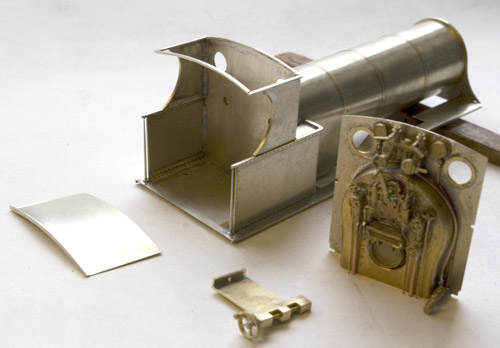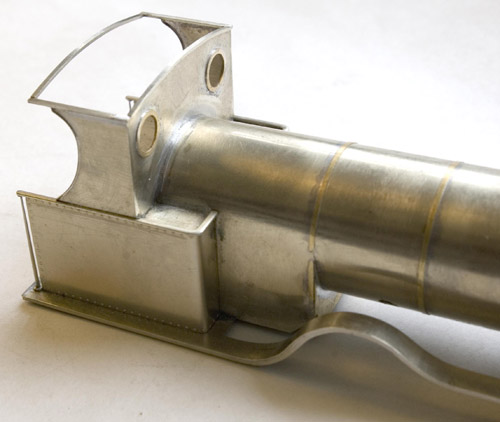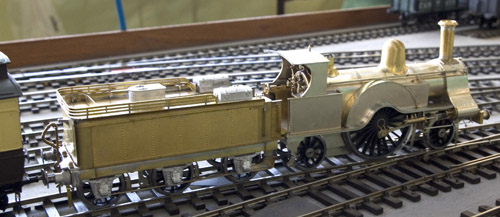The rest of the body is platework and fittings. The plain splashers were a lot easier than the slotted ones of the Ramsbottom loco. Overall the loco looks fairly plain, and the large driving wheel serves to emphasize just how small it was, even by the standards of the time. I wonder why Webb chose to rebuilt these singles (it wasn't a minor rebuild, not much more than the frames, cylinders and wheels could have been left of the originals) at a time when single driver locos had all but been replaced by four-coupled locos on most other railways?
Cab and fittings
The cab is assembled on the footplate and firebox. People ask how I get everything so square? There is no real secret, it is a matter of using the ruler and square to mark out, then cutting and filing accurately. Where possible, I leave one part slightly oversize, solder it in place and then file it back. The upper sides of the cab are a case in point. When first assembled, they overlapped the front of the cab slightly, and then I filed them back level with the front, leaving a nice sharp corner.
Another thing I do where possible is to make a dummy cab front to which the firebox backplate and the other cab fittings are attached. This comes out as a complete unit and makes the painting very much easier. The glazing of the spectacle windows is provided by a sheet of clear plastic trapped between the false front and true front of the cab.
The reverser is a separate assembly that is held in place with a screw through the cab floor. Unlike the Ramsbottom loco, the reverser does not actually work. That would have make disassembly much more difficult. The Webb version also has larger sandboxes which mean that the valve gear is not so visible.
Another thing I do where possible is to make a dummy cab front to which the firebox backplate and the other cab fittings are attached. This comes out as a complete unit and makes the painting very much easier. The glazing of the spectacle windows is provided by a sheet of clear plastic trapped between the false front and true front of the cab.
The reverser is a separate assembly that is held in place with a screw through the cab floor. Unlike the Ramsbottom loco, the reverser does not actually work. That would have make disassembly much more difficult. The Webb version also has larger sandboxes which mean that the valve gear is not so visible.



Nick Baines • Model Engineering





